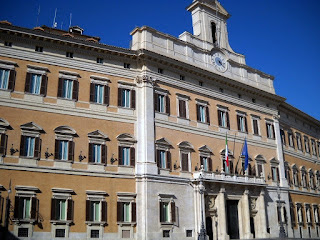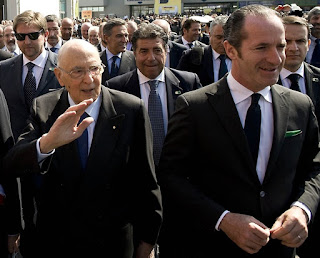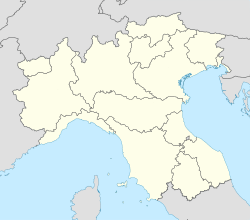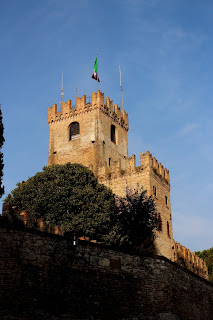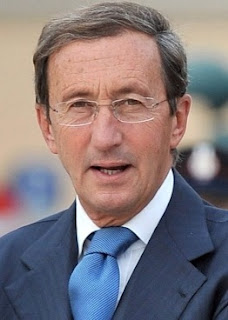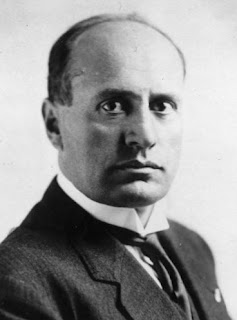Lawyer who moved from debating to dancing
.jpg) |
| De Girolamo served in prime minister Enrico Letta's cabinet from 2013 to 2014 |
Nunzia became a member of the Italian parliament, representing Silvio Berlusconi’s People of Freedom party, in 2008, and she was re-elected to parliament in 2013. She went on to become the youngest member of the Letta cabinet and one of just seven female politicians appointed.
While growing up, Nunzia attended the Liceo Classico Pietro Giannone in Benevento and then entered the faculty of jurisprudence to study law at the University of Rome La Sapienza. After graduating, she went into the legal profession.
Nunzia worked in the fields of civil law, employment law, and commercial law before going into politics.
She became a member of Forza Italia, but left the party in 2009. Voters chose her as an individual member of the People of Freedom party, when she stood for parliament for the second time.
In 2011, she married Francesco Boccia, the Minister for Regional Affairs and Autonomy. They had a daughter, who they named Gea.
After leaving the People of Freedom party in November 2013, Nunzia joined Angelino Alfano’s New Centre Right party.
However, she resigned from office in 2014, after claims were made that she had conducted herself improperly. Nunzia denied any wrongdoing, saying she had left her ministerial post in order to defend herself against the allegations made against her. After Prime Minister Letta accepted her resignation, Nunzia became the second minister to resign from the cabinet in the nine months since the elections.
 |
| With dancer Raimondo Todaro, De Girolamo reached the finals of Ballando con le Stelle |
In 2019, Nunzia took part in the 14th series of the programme, Ballando con le Stelle, Italy’s version of the BBC's popular programme, Strictly Come Dancing and America's Dancing with the Stars.
She was partnered by professional dancer Raimondo Todaro and the couple enjoyed some lively exchanges with the programme’s panel of judges at the end of their dances each week, yet were popular enough with the public to be one of six couples voted through to the finals show.
The former politician’s Ballando con le Stelle appearances have since been followed by regular television work presenting programmes for Rai Uno.
 |
| Benevento's Arch of Trajan echoes the city's Roman past |
Benevento, Nunzia De Girolamo's birthplace, is a city built on a hill some 50km (31 miles) northeast of Naples in Campania. As Beneventum, it was an important Roman trading station along the Via Appia route between Rome and Brindisi and its Roman remains are a particular attraction to visitors. An outdoor theatre built by Hadrian to seat 10,000 spectators has been preserved in relatively good condition, as has the city's marble Trajan's Arch, built during the second century to mark the opening of the Via Traiano trade route. The arch had ornate decorative carvings of exceptional detail, which celebrate the life and times of Emperor Trajan. Benevento suffered extensive damage from bombing in World War Two and several major buildings, including the city's Duomo - the Cattedrale di Santa Maria de Episcopio - had to undergo restoration or complete rebuilding work. The church of Saint Sophia, a circular building with Byzantine touches consecrated in around 760, is a UNESCO World Heritage site.
 |
| The palace housing the Sant'Ivo alla Sapienza church, which was bought with a tax on wine |
The University of Rome - often referred to as the Sapienza University of Rome or simply La Sapienza, meaning 'knowledge' - was founded in 1303 by Pope Boniface VIII, as a place for ecclesiastical studies over which he could exert greater control than the already established universities of Bologna and Padua. The first pontifical university, it expanded in the 15th century to include schools of Law, Medicine, Philosophy and Theology. Money raised from a new tax on wine enabled the university to buy a palace, which later housed the Sant'Ivo alla Sapienza church. The university was closed during the sack of Rome in 1527 but reopened by Pope Paul III in 1534. In 1870, La Sapienza ceased to be the papal university and as the university of the capital of Italy became recognised as the country's most prestigious seat of learning. A new modern campus was built in 1935 under the guidance of the architect Marcello Piacentini.
Also on this day:
1881: The death of missionary Saint Daniele Comboni
1891: The birth of Mafia boss Stefano Maggadino
1921: The birth of poet Andrea Zanzotto
_(cropped).jpg)



